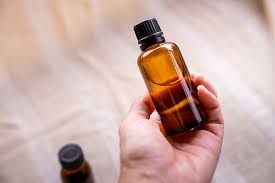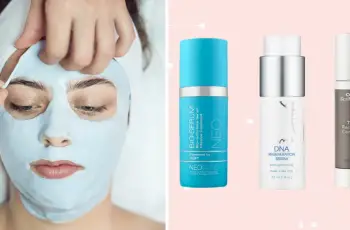
The world of skincare constantly advances. New ingredients emerge. They promote healthy, youthful skin. They also target common concerns. These include hyperpigmentation.
Inflammation and sensitivity are also addressed. Premature aging is another focus. **Gallic acid** is gaining attention. Its derivative, **diglucosyl gallic acid (DGA)**, is too.
Dermatologists, researchers, and formulators are noticing them.
These compounds are renowned. They offer antioxidant effects. They are anti-inflammatory. They also provide brightening benefits. This makes them great for sensitive skin.
They help those battling melasma. They address acne marks. They also combat oxidative stress damage. This comprehensive guide will explore them. We’ll cover their origins and benefits.
We’ll look at their mechanisms. Practical skincare applications will also be discussed.
**What Is Gallic Acid?**
Gallic acid is a natural compound. It’s a type of polyphenol. It belongs to phenolic acids. These are plant-based compounds. They are found in many botanical sources.
Examples include **gallnuts**. You can find it in **sumac**. **Witch hazel** contains it. It’s also in **oak bark**. **Tea leaves** are a rich source. Green tea, especially, has it.
Gallic acid is valued in skincare. It has strong **antioxidant properties**. It also offers **anti-inflammatory benefits**. It’s often in serums. Creams also contain it. These target uneven skin tone. They address premature aging. Skin inflammation is another target. It’s naturally derived. Its action is gentle. This makes it well tolerated. Most skin types handle it well. Even sensitive skin can use it.
Reactive skin types benefit too.
**Introducing Diglucosyl Gallic Acid (DGA)**
Gallic acid is effective alone. But biotechnology has advanced. It created **Diglucosyl Gallic Acid (DGA)**. This version is more stable. It is also more efficient. DGA is a modified derivative.
It’s biotechnologically created. Gallic acid binds to glucose molecules. This creates DGA. This change improves its stability. It’s better in cosmetic formulas. It also allows activation.
This activation is microbiome-dependent. It only becomes active on skin. It needs contact with skin’s natural microbiota.
Once applied, enzymes act on it. Skin’s microbiome produces these enzymes. They convert DGA. It becomes trihydroxy benzoic acid. This is a potent **tyrosinase inhibitor**. Tyrosinase is key in melanin production.
By inhibiting it, DGA helps. It lightens dark spots. It promotes even skin tone. It does this without irritation. Harsher agents often cause irritation. Hydroquinone is an example.
**Key Benefits of Gallic Acid and Diglucosyl Gallic Acid in Skincare**
These ingredients offer many benefits. Whether used alone or together. Both gallic acid and DGA help skin. Let’s see why they’re popular.
1. **Antioxidant Protection**
Gallic acid is a strong antioxidant. It helps neutralize free radicals. UV radiation creates these. Pollution also generates them. Stress and other aggressors contribute. Free radicals are unstable molecules.
They can damage skin cells. They speed up aging. Gallic acid neutralizes them. This prevents wrinkles. It reduces fine lines. It also stops uneven pigmentation.
2. **Anti-inflammatory Action**
Both GA and DGA are powerful. They are anti-inflammatory agents. They are perfect for calming skin. They soothe irritated skin. They help inflamed skin. Dealing with acne? Or rosacea?
Perhaps post-inflammatory hyperpigmentation (PIH)? These ingredients can help. They soothe and reduce redness. Swelling and discomfort are lessened.
3. **Brightening and Skin Tone Evening**
DGA inhibits melanin production. This makes it effective. It addresses hyperpigmentation. This includes melasma. It helps with acne scarring. Sunspots also respond well. Skin’s microbiome activates it.
This happens gradually. So, it’s a gentler choice. It’s an alternative to hydroquinone. It’s safe for long-term use.
4. **Non-Comedogenic and Acne-Friendly**
Gallic acid is non-comedogenic. This means it won’t clog pores. This is vital for acne-prone skin. Its antimicrobial effects help too. Its anti-inflammatory effects reduce redness. They prevent dark marks.
These marks linger after pimples heal.
5. **Suitable for Sensitive and Reactive Skin**
Many brightening ingredients irritate. Gallic acid and DGA are different. They are extremely well tolerated. This makes them excellent choices. They suit sensitive skin. Reactive skin benefits. Compromised skin barriers improve.
**DGA vs. Gallic Acid: What’s the Difference?**
Both are effective ingredients. But they differ significantly. Their structure is distinct. Their stability varies. Their mechanism of action is unique.
| **Property** | **Gallic Acid** | **Diglucosyl Gallic Acid (DGA)** |
| :———————- | :———————————— | :—————————————– |
| **Origin** | Naturally occurring in plants | Biotechnologically modified derivative of GA |
| **Stability** | Prone to degradation in formulas | Highly stable, more suitable for topical use |
| **Mechanism of Action** | Immediate action upon application | Activated by skin’s microbiome, slower onset |
| **Skin Tolerance** | Good for most skin types | Excellent for sensitive or reactive skin |
| **Tyrosinase Inhibition** | Mild | Strong, microbiome-activated inhibition |
| **Common Uses** | Antioxidant, soothing, anti-aging | Brightening, anti-inflammatory, skin-evening |
**Targeted Skin Concerns and Uses**
Gallic acid and DGA target specific issues. Here’s how they can help your skin.
1. **Hyperpigmentation & Melasma**
DGA’s use in melasma is celebrated. It helps with treatment. It also aids maintenance.
It works by:
* **Inhibiting tyrosinase activity**. This is key for melanin.
* **Reducing melanin transfer**. This lessens dark spots.
* **Calming skin inflammation**. Inflammation triggers melasma.
DGA does not sensitize skin. Unlike aggressive lightening agents. It’s safe for pregnant women. It’s also safe for “tyrosinase inhibitor holidays.” These pauses reduce irritation. They also prevent resistance.
2. **Acne and Post-Acne Marks**
Do you break out easily? Do pimples leave dark spots? This ingredient might be perfect for you. It could be a great addition. It helps fade stubborn marks. It also reduces inflammation.
Redness is lessened. This helps breakouts heal faster.
3. **Skin Brightening and Radiance Boost**
Skin can become dull with age. Chronic sun exposure also contributes. It can look uneven and lackluster. Adding a DGA product helps. It significantly improves skin.
Benefits include:
* **Increased skin luminosity**.
* **More evenness of tone**.
* **Reduction in yellowness or brownness**.
4. **Pregnancy-Safe Pigmentation Treatment**
Many pigmentation treatments are off-limits. This is true during pregnancy. Both gallic acid and DGA are safe. The Environmental Working Group (EWG) rates them “1”. This is the safest possible rating. They are also safe while breastfeeding. This makes them go-to ingredients. They are key in pregnancy-safe skincare for melasma.
**How to Use Gallic Acid or DGA in Your Skincare Routine**
Choosing a product is important. Look for gallic acid or DGA. Ensure the formulations are right.
They should be:
* **Properly pH-balanced**. This ensures effectiveness.
* **Free from harsh exfoliants**. Especially if skin is sensitive.
* **Paired with calming ingredients**. Niacinamide or panthenol are good. This enhances soothing effects.
These ingredients are common. You’ll find them in serums. They are in anti-aging creams. Night repair lotions also contain them. Gentle exfoliating treatments may use them.
**Recommended Product Types:**
* **DGA Cleansers:** They gently prepare skin. They activate DGA with microbiome contact.
* **DGA Serums:** These are ideal for concentrated treatment. They target dark spots and dullness.
* **Moisturizers with DGA:** Best for melasma-prone skin. Also good for sensitive skin types.
* **Spot Treatments:** These directly target hyperpigmentation. They have higher concentrations.
**Final Thoughts: Is Gallic Acid Right for You?**
Gallic acid and DGA are powerful. They are science-backed ingredients. They offer many benefits. Especially for those with hyperpigmentation. They help with acne-related dark spots.
They aid sensitive skin conditions. Rosacea and melasma are examples. Their antioxidant properties are strong. They are anti-inflammatory. They also brighten skin.
They are truly multi-functional heroes. They fit well in modern skincare.
Many depigmenting agents are harsh. Gallic acid-based compounds are gentler. They are both effective and well tolerated. Even reactive skin tolerates them. They are safe for pregnancy-sensitive skin.
**Try It Today – With a Bonus Discount!**
We appreciate you exploring our content. As a thank you, enjoy a special offer! Get **20% off** your next purchase. Use code **STSBlog20** at checkout. Experience premium skincare.
It’s powered by science-backed ingredients like DGA.


